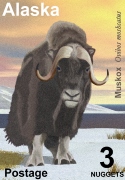A gray spring day at a pond, still partially choked with ice, not far from where I live. Two Canada Geese, often referred to as “honkers,” swim together in the frigid water.
Click on image for full-size view. As usual this is available at my Zazzle store.

Canada Geese
The Canada Goose, Branta canadensis, has a black head and neck, white patches on the face, and a brownish-gray body.
The black head and neck with white “chinstrap” distinguish the Canada Goose from all other goose species, with the exception of the Barnacle Goose, but the latter has a black breast, and also gray, rather than brownish, body plumage.
The Canada Goose ranges 30 to 43 inches in length and has a 50 to 73 inch wingspan. Males usually weigh 7.1–14 lbs and can be very aggressive in defending territory. The female looks virtually identical but is slightly lighter at 5.5–12 lbs, and has a different honk. The life span in the wild of geese that survive to adulthood ranges 10–24 years
Canada Geese are native to North America. They breed in Canada and the northern United States in a variety of habitats. Nests are usually located in an elevated area near water such as streams, lakes, ponds and sometimes on a beaver lodge. Eggs are laid in a shallow depression lined with plant material and down.
In recent years, Canada Goose populations in some areas have grown substantially, so much so that many consider them pests for their droppings, bacteria in their droppings, noise, and confrontational behavior. This problem is partially due to the removal of natural predators and an abundance of safe, man-made bodies of water such as found on golf courses, in public parks and beaches, and in planned communities. Due in part to the interbreeding of various migratory subspecies with the introduced non-migratory Giant subspecies, Canada Geese are frequently a year-around feature of such urban environments.
Canada Geese have reached northern Europe naturally, as has been proved by ringing recoveries. The birds are of at least the subspecies parvipes, and possibly others. Canada Geese are also found naturally on the Kamchatka Peninsula in eastern Siberia, eastern China, and throughout Japan.
Like most geese, the Canada Goose is migratory with the wintering range being most of the United States. Honking from large groups of Canada Geese flying in V-shaped formation signal the transitions into spring and autumn. In some areas, migration routes have changed due to changes in habitat and food sources. In mild climates from California to the Great Lakes, some of the population has become non-migratory due to adequate winter food supply and a lack of former predators.
Canada Geese are primarily herbivores, although they sometimes eat small insects and fish. Their diet includes green vegetation and grains. The Canada Goose eats a variety of grasses when on land. It feeds by grasping a blade of grass with the bill, then tearing it with a jerk of the head. The Canada Goose also eats grains such as wheat, beans, rice, and corn when they are available. In the water, it feeds from silt at the bottom of the body of water. It also feeds on aquatic plants, such as seaweeds. In urban cities, they are also known to pick food out of garbage bins.
Adult geese are often seen leading their goslings in a line, usually with one parent at the front, and the other at the back. While protecting their goslings, parents often violently chase away nearby creatures, from small blackbirds to lone humans that approach, after warning them by giving off a hissing sound and will then attack with bites and slaps of the wings if the threat does not retreat or has seized a gosling. Most of the species that prey on eggs will also take a gosling. Although parents are hostile to unfamiliar geese, they may form groups of a number of goslings and a few adults, called crèches.


















